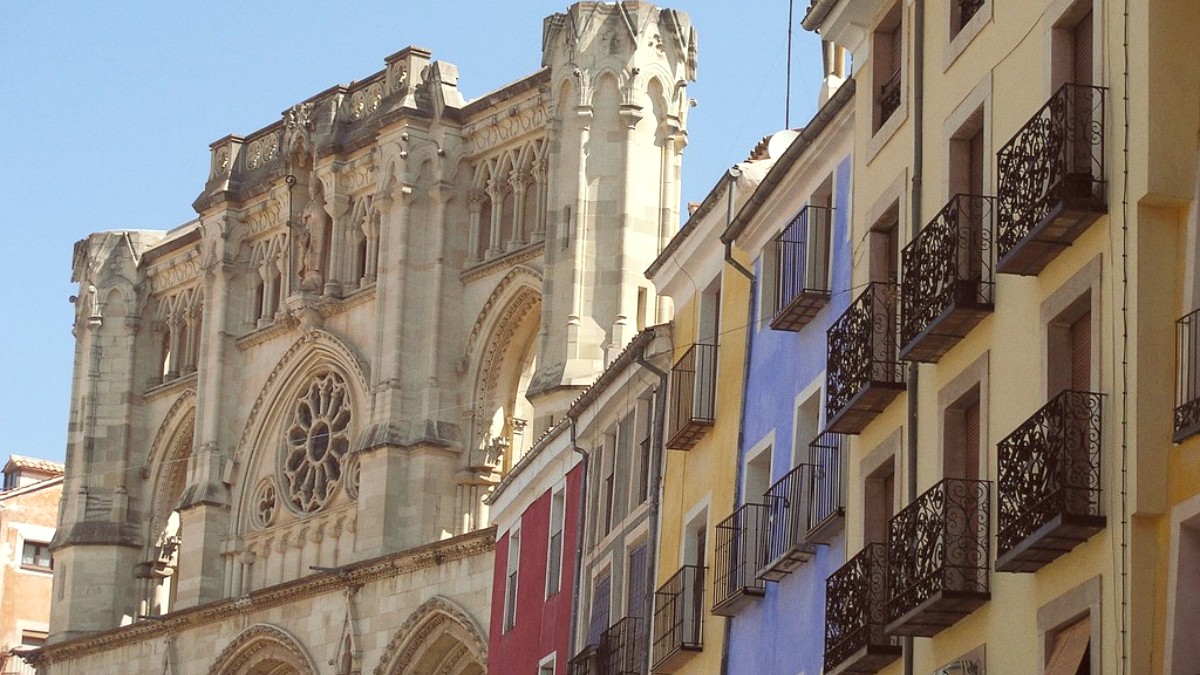
Castilla La Mancha, Spain
Cuenca's cuisine has strong roots in Castilla-La Mancha's rural, mountainous, and agricultural traditions. Dishes often highlight game meats, local produce, and traditional preparation methods. Historically, shepherds and farmers shaped this cuisine, which features simple, filling ingredients.
While sharing traits with broader Castilian cuisine, Cuenca has distinct local specialties, providing authentic regional tastes.
Game meats like deer, wild boar, and partridge are prominent. Lamb and pork are also widely used.
Garlic, high-quality olive oil, fresh bread, cured meats (chorizo, jamón) are staples. Seasonal mushrooms are common. Artisanal cheeses, especially Manchego, are celebrated.
Flavors are savory, earthy, and often rich, with a strong focus on local ingredients. Simple preparation allows the quality of produce and meat to shine.
A hearty, rich pâté-like dish from various game and domestic meats.
Served hot with bread in traditional restaurants.
A thick, creamy paste of garlic, potatoes, cod, olive oil, and sometimes eggs.
Served cold with bread, distinct flavor profile.
Lamb intestines marinated in wine and herbs, twisted and deep-fried or grilled.
A unique and popular local delicacy often found in tapas bars.
Traditional dessert with Arabic origins made from honey, almonds, walnuts, and breadcrumbs, often wrapped in wafers.
Sweet, crispy fried pastries shaped like flowers, dusted with sugar. Light and crunchy.
Some restaurants offer elevated versions of traditional cuisine, with refined service and ambiance, especially in the old town or at the Parador.
Numerous options in both old and new towns. Many offer "Menu del Día" for lunch and à la carte for dinner.
Small bars and taverns, especially in the new town, offer inexpensive tapas and simple meals.
While traditional cuisine is meat-heavy, most restaurants offer vegetarian options. Look for salads, grilled vegetables, or mushroom dishes.
Many local specialties can be adapted.
Vegan options might require more specific requests. Awareness is growing, but it helps to be clear about ingredients.
Larger cities like Madrid offer more dedicated vegan restaurants.
Carry a dining card in Spanish. Many roasted meats or salads are naturally gluten-free.
Communicate allergies clearly: "Soy alérgico/an a..."
Be aware of potential cross-contamination in kitchens.
Restaurant staff can help guide you on ingredient safety.
Look for establishments specializing in local Cuenca dishes for an authentic experience.
Ask locals for their favorites.
Many restaurants offer a "Menu del Día," a set lunch menu providing good value.
Includes a starter, main, dessert, and drink.
These delicate puff pastry squares filled with cream are popular throughout Castilla-La Mancha.
Limited options for international cuisine, mainly in the new town.
A celebrated artisanal cheese from the wider Castilla-La Mancha region.
Garlic and high-quality olive oil are staples in Cuencan cooking.
Wines from Castilla-La Mancha are abundant and affordable, offering good quality for the price.
Many restaurants close between lunch and dinner service.
Plan your meal times accordingly.
Visit Mercado de Cuenca for a glimpse into daily local life and fresh ingredients.
Some stalls might have prepared food.
Choose restaurants and bars that focus on regional ingredients and traditional recipes.
For popular spots, especially during high season, consider making reservations.
Don't forget to photograph your culinary discoveries! They often look as good as they taste.
Engage with the local food culture beyond just eating.